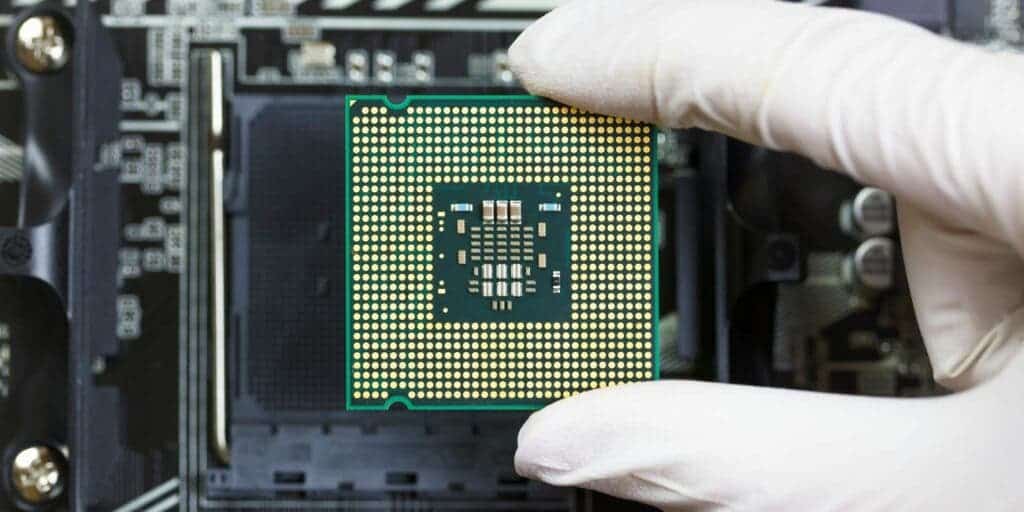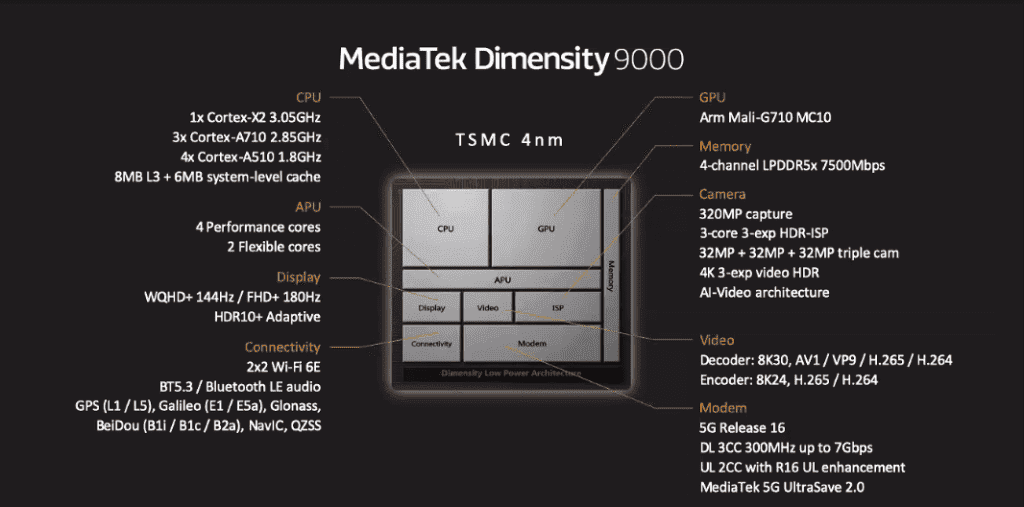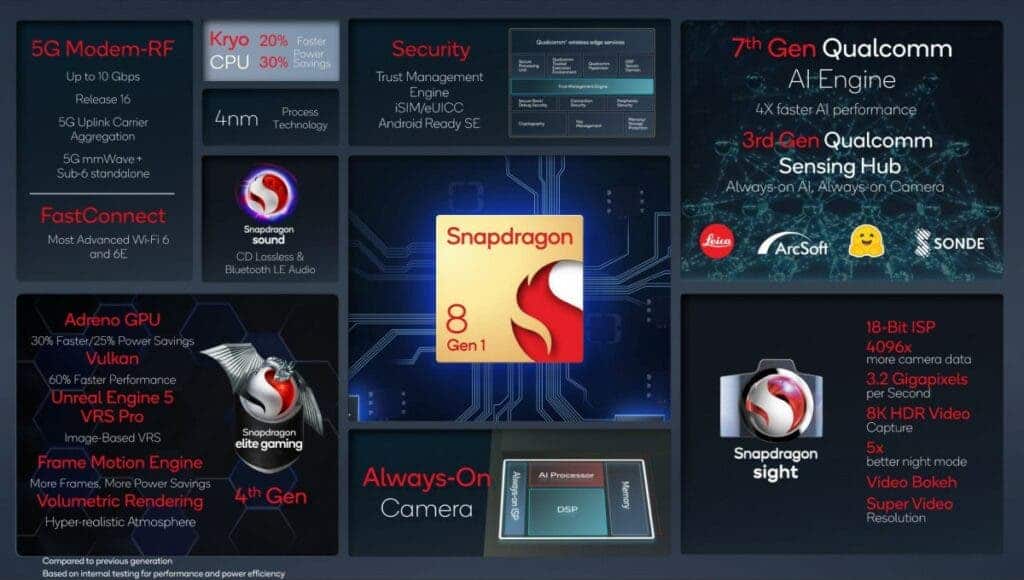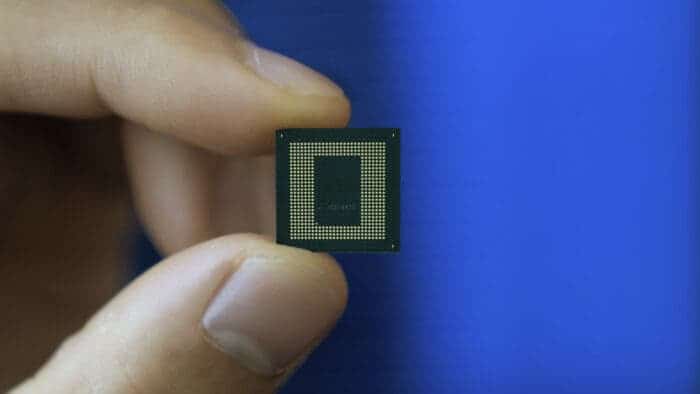Smartphone processors have been undergoing rigorous development in recent years. However, with the exit of Huawei Kirin chips, there are three major players. We have the Apple Bionic chips, Samsung Exynos chips, Qualcomm Snapdragon chips, and MediaTek Dimensity chips. In terms of performance, Apple chips are far ahead of the others. In fact, in the top 10 list of flagship processors, Apple takes 8 positions. The top 6 positions are also occupied by Apple chips leaving the 7th and 8th positions for MediaTek and Qualcomm respectively.

Geekwan, a chip assessment organization recently looked at the performance of flagship processors across iOS and Android platforms. Its testing process follows a comprehensive performance ranking and rigorous testing. The chips undergo comprehensive performance, CPU, and GPU performance tests.
Top 10 mobile flagship processors according to Geekwan
- M1 (Pad): 295.4% – Apple
- A12Z: 198.5% – Apple
- A15 (iPhone 13 Pro Max): 193.7% – Apple
- A12X: 190.1% – Apple
- A15 (iPhone 13): 176.0 – Apple
- A14 (iPad): 168.4% – Apple
- Dimensity 9000: 167.9% – MediaTek
- Snapdragon 8 Gen 1: 153.6% – Qualcomm
- A14: 148.5% – Apple
- A13: 129.0% – Apple
We can see from the list above that Apple chips from three years ago make the top 10 list. This shows how efficient Apple chips are. However, the major point of discussion is the two Android chips.

Snapdragon is not always the “king” of Android
When it comes to the Android flagship platform, everyone’s first reaction in recent years must be Qualcomm Snapdragon. However, Snapdragon is slowly losing its grip on the flagship end, MediaTek Dimensity chip is in town. MediaTek’s top flagship Dimensity 9000 ranks first in the Android flagship processor in the comprehensive performance list, surpassing Qualcomm’s new Snapdragon 8 Gen 1 SoC. The Dimensity 9000 scores 167.9, not only leading the new Snapdragon 8 Gen 1 by nearly 9.3% but also leading the Apple A14 by 13.1%. It is the well-deserved king of Android flagship performance.
Since last year, there have been indications that Snapdragon chips are losing their relevance. A balanced chip is one that can handle performance as well as heating/temperature. However, this has not been the case for the last two generations of Snapdragon chips. The Snapdragon 888 is a performance “king” but also a heating “lord“. This leaves manufacturers with so much work to do in terms of heat dissipation. While the performance is decent, the heating is terrible and this also reduces the performance. So much that even the watered-down Snapdragon 870 became the preferred choice for many flagships because brands did not have to do so much work in terms of heat dissipation.
Even the latest Snapdragon 8 Gen 1 has similar temperature issues. However, its situation appears to be better than the Snapdragon 888. The Dimensity 9000 is a performance “master”. It properly balances performance and heating/temperature. This is the edge that this chip has over the Snapdragon 8 Gen 1.
Dimensity 9000 flagship processor
Dimensity 9000, as the top flagship processor built by MediaTek, is manufactured with TSMC’s most advanced 4nm process, which fundamentally ensures not only better performance, but also the lowest power consumption, heat generation, and more global energy efficiency optimization technology. This helps out with the high energy efficiency performance and it is even more outstanding.

In terms of architecture, Dimensity 9000 is also very advanced. The CPU is based on the latest ARMv9, with a total of eight cores, including one super-core X2 3.05GHz, three large-core A710 2.85GHz, four small-core A510 1.8GHz, and 8MB L3. It also has a 6MB SLC large cache which makes it more conducive to performance.
The GPU is also the latest ARM Mali-G710 with a total of ten cores. In terms of AI, it was upgraded to the latest fifth-generation independent AI processor APU 590, which won the performance and energy efficiency of the Zurich AI Benchmark. Various hard-core configurations have made the Dimensity 9000 a new benchmark for flagship mobile phone chips in the Android camp. It has also brought new choices to the flagship Android mobile phone market.
At present, there are not many Dimensity 9000 smartphones in the market. However, we currently have the Oppo Find X5 Pro Dimensity Edition and Redmi K50 Pro. The performance and energy efficiency of these two flagship terminals are outstanding. According to reports from popular Weibo tech blogger, @DCS, the Vivo X80 series equipped with Dimensity 9000 is already on the way. The Dimensity 9000 running score on AnTuTu is 1.07 million and this chip supports MediaTek mobile game super-scoring technology.
Snapdragon 8 Gen 1 flagship processor
The CPU keeps the three-cluster design and is perfectly in line with the previous leaks. There is a Prime Core with an ARM Cortex-X2 core with a 3.0 GHz clock speed. There are also three “supporting” performance cores based on the newer ARM Cortex-A710 standard. Those will run at 2.5 GHz. Finally, we have four efficiency cores that will also sport the new ARM Cortex-A510 standard running at 1.8 GHz.

Overall, the new CPU will be 20 percent faster than the one in the Qualcomm Snapdragon 888. It will also reduce power usage by up to 30 percent. That certainly is a significant upgrade. The upcoming Xiaomi 12, for example, will be 20 percent faster than its predecessor.
Now the next big thing is on the GPU part. The new chipset introduced the new Adreno 730 GPU with a 30 percent performance boost and up to 25 power-saving thanks to its new architecture. Qualcomm developed three Elite Gaming features, one of which will allow developers to strike a balance between performance and power efficiency. The Adreno Frame Motion Engine allows the GPU to render a game at double the frame rate while using the same amount of power. Alternatively, it can keep the FPS the same while cutting power draw by half.
The set of new features also includes desktop-class volumetric rendering. It is used for dramatic lighting effects, the god rays that level designers seem to love so much. Also new is Variable Rate Shading Pro, an image-based VRS that should streamline the integration of VRS into more games. According to the chipmaker, there are already many partnerships with solid game developers to extract the best of the new hardware.
The Snapdragon 8 Gen 1 brings an integrated X65 5G modem. It offers support for both sub-6 and mmWave operations. It can deliver theoretical peak speeds of 10 Gbps. For the first time, it also supports carrier aggregation for the uplink.





